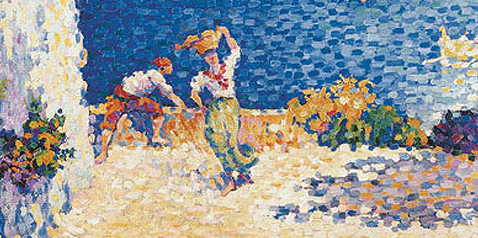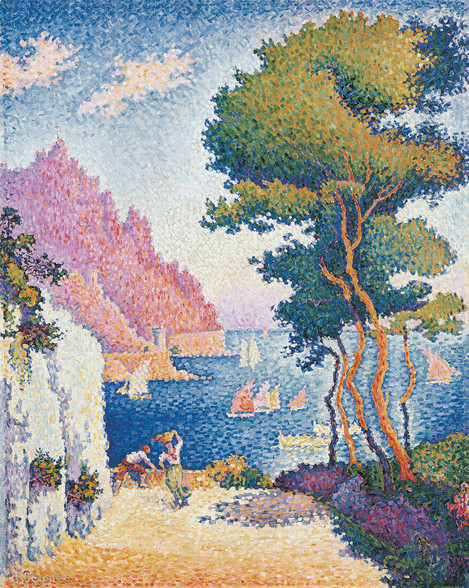
The Magic of Colour
Paul Signac
Capo di Noli, 1898
Noli is on the Italian Riviera close to Genoa. In the summer of 1896, the painter hiked there from Saint-Tropez. In his view of the cape, which was painted two years later, he presents us with the scene of the colourful Mediterranean harbour. He himself said of this picture that he ‘wanted to take every corner of the canvas to the absolute extreme in terms of colour’.
Inspired by physical research, Signac, and above all his fellow painter Georges Seurat (1859–1891), had developed the Impressionist painting technique into a strictly systematic dot-structure of complementary colours. Seurat christened this technique ‘Divisionism’, from the colour-dissection process, but it is now generally known as ‘Pointillism’, after the dots.
With his "Capo di Noli" Signac created a balanced composition of lines and colours. The effect of his depiction had been worked out with great care in the studio and precisely calculated before he implemented his ideas on canvas. The world of things was now only an excuse for the mise-en-scène of colour, and this view of the cliffs of the Mediterranean coast is no exception: the colour texture is what matters here, not, as with the Impressionists, the ‘impression’ of a natural scene. Precisely this non-natural application of pure colour was what had a lasting influence on painters in the early twentieth century – both the Fauves in France, and the Expressionists in Germany.
Paul Signac
Paris 1863 – 1935 Paris
Capo di Noli
1898, Oil on Canvas, 93,5 x 75 cm
On permanent loan from the Fondation Corboud
Inv. no. WRM Dep. FC 682
Photo: Rheinisches Bildarchiv Köln



